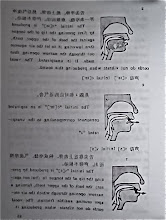Earlier this month during a trip to Chicago, I, along with a few close friends, made a point to spend several hours touring the recently debuted new home of the Art Institute of Chicago's Modern Wing. The impressively designed and sized edifice exhibits a breathtaking and comprehensive collection of modern and contemporary art. Indeed, these well-spent few hours did neither the building nor its collection due justice.

I stand before Salvador Dalí's Invention of the Monsters (1937; oil canvas) beside an equally captivated viewer. To our right is Joan Miró's spectacular Personages with Star (1933; oil on canvas). Photo by Matt Bauman.
At the museum, I was struck by the pervasiveness of a certain phenomenon which I know you have witnessed and which I am most certain we have all engaged in ourselves: snapping photographs of art on digital cameras and camera phones. Now, what most struck me was not just such photography itself; rather, it was the behavior of most of the photographers. I did not observe many of what I will dub the "phone-photographers"—in order to distinguish them from professional photographers, though I am aware that there exists legitimate cellphone photography—stopping to consider and contemplate the artwork. Instead, I observed them quickly pointing-and-shooting artwork before moving on to point-and-shoot another work.
I admit that such behavior is to be expected in a digital age, visual culture, and perpetually plugged-in period. Further, I believe the ubiquity of digital cameras and camera phones in our lives is of colossal value, as it enables us to document our lives and experiences in ways, both creative and ordinary, heretofore unimagined. Thus, I urge you to know that I seek to judge neither the phone-photographer nor the technology itself. No, my intention is only to tease out and reflect on the ramifications of such technological usage, as many before me have done, most noticeably, though in a different capacity, by Walter Benjamin in his groundbreaking "The Work of Art in the Age of Mechanical Reproduction." I will return to this important essay in the next installment.
My initial reaction was one of annoyed distraction. I have a difficult enough time viewing art in the first place. I don't want to spend too much time reading plaques, but I need the information to digest a work of art historically, which need often compels me to believe I am missing much of the point of the art itself. The result is that I feel my eyes moving over the words without really absorbing them and feel my mind working too deliberately to allow the work to speak to me viscerally. I move on to the next painting or sculpture uncertain about what I just beheld or what I was being asked, solicited to behold. At this new work, I then hear the voice: "I am here before X. Take it in, remember it. Remember that you saw it." This directive immediately obliterates any direct experience with the art I hope to have. And then there is the whole issue of what to do with my hands. Fold them behind my back? Cross them on my chest? Place them contemplatively under my chin? Anyhow, the intervening layers of concept, context, and social code eventually do weaken, and the artwork does receive me and I it—prepredicatively. This most frequently and memorably occurs when I stand before works by Mark Rothko. His fields of color are to me sublime, hypnotic; the boundaries draw me into a space beyond their horizons, as did this painting in the Art Institute...

Mark Rothko's Untitled (Purple, White, and Red) (1953; oil on canvas).
...until there materialized before me the arms of a man lifting a camera armed with a flash. He snapped his photograph and moved on. The aura, the trance was lost.
My second reaction was more reflective and self-critical. I recalled a vacation to Scotland I took with my father and eldest brother a few years back. I spent most of the trip documenting the trip behind a digital camera. This, to me, is not entirely different than the phone-photographers I observed at the Art Institute, as most of them, like me, were tourists who wished to document their vacations. (In the next installments, I will be discussing more specifically, however, the ramifications of photographing art, as I think it warrants more attention.) I'm glad that I did so in Scotland, as such a major and splendid trip as that deserved a chronicling, but, in many ways, I'm sad that I did. For, when I think back to those travels and experiences, I summon two distinct sets of images and memories. The first is the memory of directly being there. In these images, in these memories, I wield no camera. In these, for example, I am in a bar having robust local ales over hearty local fare in the company of my father and brother, all of us stumbling happily into the afternoon sun back down the cobblestone hills. These images and memories are of what I will now refer throughout as "direct experience." The second set of images and memories are themselves twofold and are what I call "indirect experience." The first fold comprises images and memories as framed by the digital camera's eyepiece, as framed by the digital camera's display of what I captured, as framed by me framing the sites of Scotland. (Perhaps as opposed to Scotland framing my experience.) The second fold comprises all the developed photographs I took. Yes, I took some great ones, but I find it very surreal that my images and memories of the significant monuments, architecture, landscapes, castles, etc. are constituted by the very photographs of those sites, objects, places, things. In other words, I remember the Edinburgh Castle, for example, indirectly through my photographs of it more than I remember my directly being there.
Through these two reactions to the phone-photographers, I arrive at my principal concern. We live in a "hyper-now" where we can document our lives, chronicle ourselves and others, and record our world so directly, immediately, so rapidly, and so diversely in such forms as blogs, Twitter, Facebook, especially through the photography of our digital cameras and camera phones. Yet, now more than ever, we are, it appears to me, farther away from our lives, ourselves, others and our world because our experience of them is indirect. Our existences are preoccupied with our documentation of them.
Await the next installment where I explore direct and indirect experience in greater depth, including a discussion of Walter Benjamin and photographing art.



I have two vastly divergent opinions on the phone-photographers, which I would like to share. On the one hand, I think they are trite and careless with their subjects, whatever they may be: the often low quality and poor focus or lighting doesn't always do justice, and I sometimes call into question motivation for no apparent reason. On the other hand, the camera is a device foreign to many, even the best photographers sometimes have distant relationships with their tools, or express frustration in a certain device's limitations or shortcomings. Anymore, the cellphone is a device nearly literally attached at the hip for most people, and is as naturally used and sublimated as the fingers which operate it. Does this allow for more natural memories, as you seem to suggest? It certainly seems the happy medium between Full Recollection and permanent documentation.
ReplyDeleteAs a natural extension, we must take into account planning versus spontaneity. When you book a trip, say, to a new art wing in a museum, there are hundreds or even thousands of expectations, whether supposed or presupposed that cast a certain light on the entire event. The documentation of the event, then, assumes that light, and context is unavoidable. While there is still context for spontaneous moments, they seem more self contained, and as such don't get lost in some greater lattice-work or spectacle. Of course, this is all speculation on my part; I'm only hoping to contribute to the dialogue. I am enjoying your writings so far, John, and hopefully inspired by them as well!
Here I am being "that guy" again, but you're actually looking at Joan Miró's "Painting (Summer 1936)" I was going through the full-sized files when I imported them off my camera and happened to catch that. We at the long forgotten and seldom updated Psychogenic Re-fugue-ee are intrigued enough by the dichotomy of memory and photography to consider summoning the Cosmic Cricket for a meditation on the subject. Can't wait for your thoughts on Benjamin, btw.
ReplyDelete